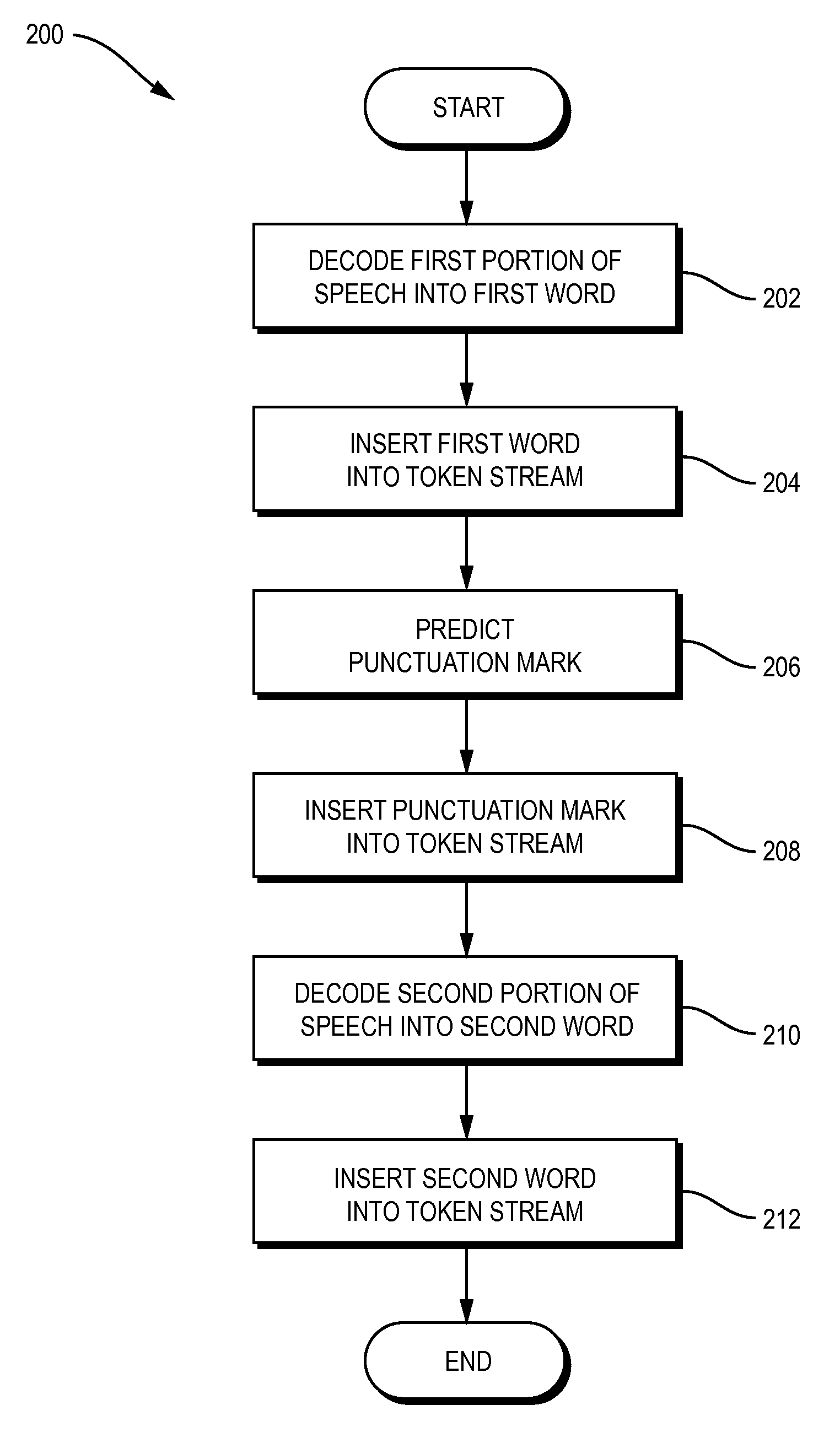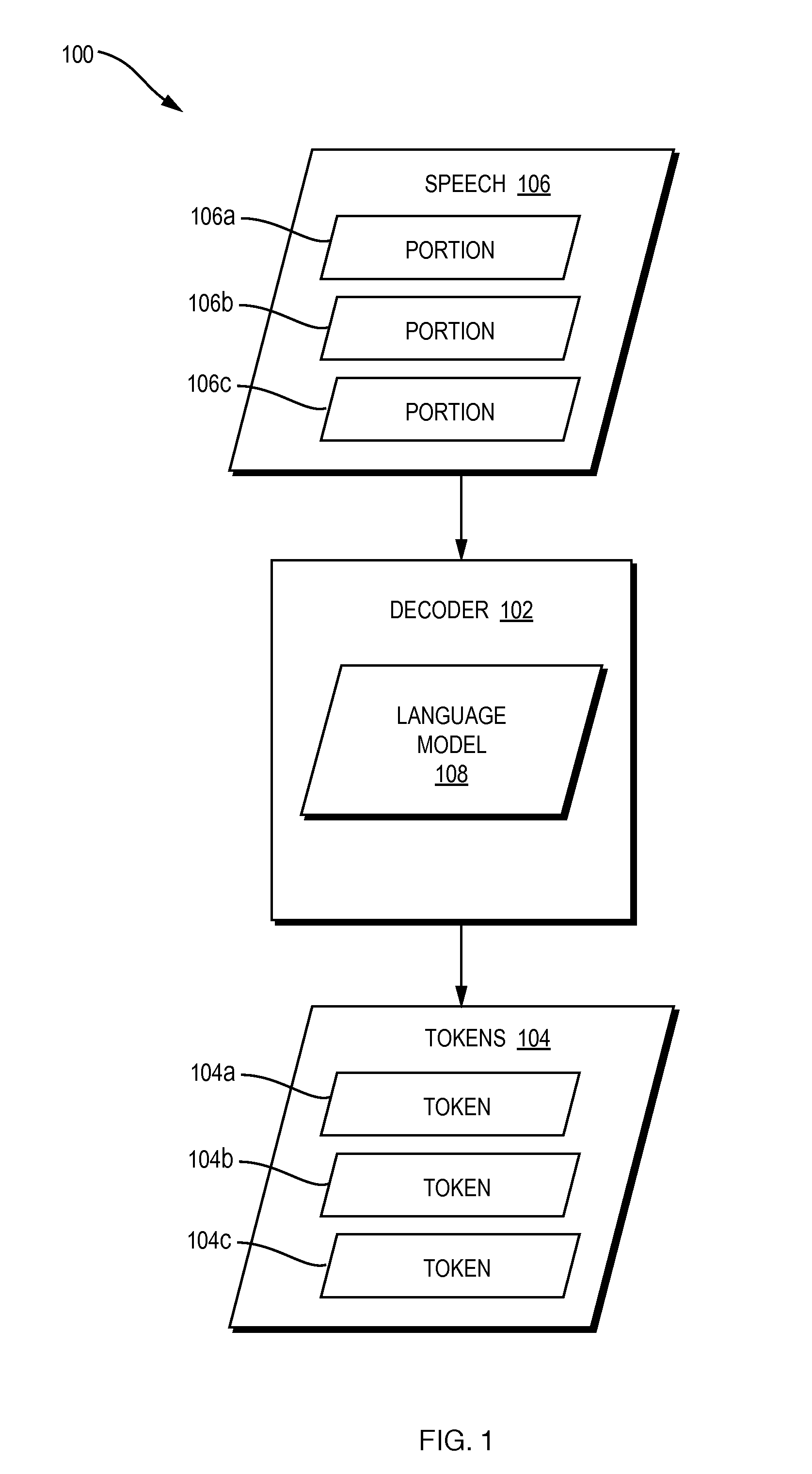Decoding-Time Prediction of Non-Verbalized Tokens
a technology of non-verbalized tokens and prediction time, applied in the field of decoding time prediction of non-verbalized tokens, can solve the problems of human transcriptionists who transcribe speech manually, can not be transcribed verbatim to produce the desired transcript, and is difficult to design automatic punctuation insertion systems,
- Summary
- Abstract
- Description
- Claims
- Application Information
AI Technical Summary
Problems solved by technology
Method used
Image
Examples
Embodiment Construction
[0016]Non-verbalized tokens, such as punctuation, are automatically predicted and inserted into a transcription of speech in which at least some of the tokens were not explicitly verbalized. Token prediction may be integrated with speech decoding, rather than performed as a post-process to speech decoding. For example, lexical prediction of non-verbalized tokens may be integrated with Viterbi decoding for Large Vocabulary Conversational Speech Recognition (LVCSR) in a single pass. The techniques disclosed herein, however, may be used in connection with other kinds of decoding, with vocabularies of any size, and with either conversational or non-conversational speech recognition, in any combination.
[0017]As mentioned above, a variety of existing punctuation prediction systems rely on acoustic and / or prosodic features in the dictated speech to predict the type and location of punctuation. In contrast, embodiments of the present invention rely primarily on lexical cues (possibly, but n...
PUM
 Login to View More
Login to View More Abstract
Description
Claims
Application Information
 Login to View More
Login to View More - R&D
- Intellectual Property
- Life Sciences
- Materials
- Tech Scout
- Unparalleled Data Quality
- Higher Quality Content
- 60% Fewer Hallucinations
Browse by: Latest US Patents, China's latest patents, Technical Efficacy Thesaurus, Application Domain, Technology Topic, Popular Technical Reports.
© 2025 PatSnap. All rights reserved.Legal|Privacy policy|Modern Slavery Act Transparency Statement|Sitemap|About US| Contact US: help@patsnap.com



